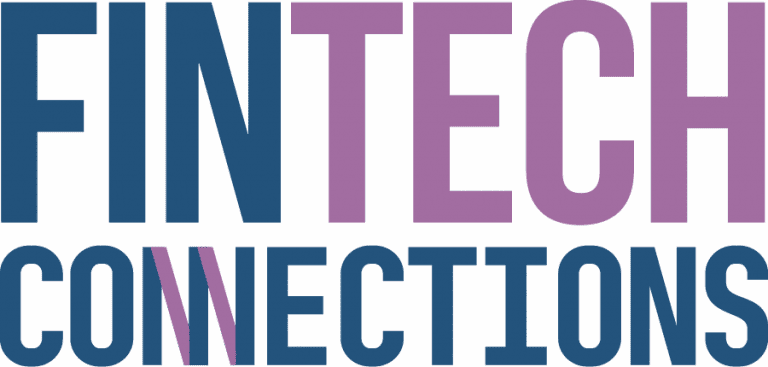Following on from the recent publication of our report on the Four Key Trends in Australian Payments, we dig a little deeper into the first trend – real-time payments – with a particular focus on what this means for businesses.
A BRIEF HISTORY OF REAL-TIME PAYMENTS IN AUSTRALIA
To date, real-time account-to-account payment enablement has primarily focused on consumers – it has been four years since the Australian public were first introduced to the concept through an advertising campaign featuring a forgetful fish-headed man named Gary P Goldfish. Gary reassured us that anyone can have a “goldfish moment”, where they can’t remember their bank account details. A problem solved by the simple addressing feature of the New Payments Platform (NPP).
NPP payments were slow to take off initially in Australia. Some banks struggled to implement real-time payment services, meaning early adopters often found the account they wanted to pay was not NPP-enabled. In other instances, upper payment thresholds restricted NPP use in some scenarios.
Despite these challenges, transaction volumes have continued to grow thanks in some part to smaller banks pushing regular Direct Entry (batch) transactions through the real-time payments infrastructure. Daily transactions now average 2.8 million, with over 76 million accounts reachable via the New Payments Platform.
Whether or not consumers realise they are using real-time payment rails is debatable. The underlying payment rails used by retail banks are not always obvious to consumers – nor need they be.
The same cannot be said for corporate customers, however. Often, real-time payments differ in price, meaning corporates need clarity on how their transaction will be routed. It’s perfectly understandable then that retail adoption of real-time payments has been faster than that of their corporate counterparts – but this may be set to change with the advent of payment mandates later this year.
CORPORATE PAYMENTS – IF IT’S NOT BROKEN, WHY FIX IT?
Compared with consumer payments, corporate payments are a little more complex. A typical large corporate will likely hold many accounts, spread across numerous legal entities. In the case of multinational organisations, those accounts might be domiciled in different currencies and located across different jurisdictions.
Batch payments, despite their limitations, have in some respect simplified corporate payments. Grouping payments into batches means thousands of outgoing payments can be approved and processed collectively. Additionally, treasury teams can view balances with some certainty that their cash position won’t change until the next batch, simplifying liquidity management.
Corporate treasurers might find themselves wondering if there is a need to embrace the brave new world of real-time payments at all. Here are three reasons they should reconsider.
- CUSTOMER EXPERIENCE
Avoiding change is rarely a sustainable long-term position. Disruptive business models tend to leverage innovative technologies to deliver a superior customer experience.
Historically, cash was the dominant form of payment, thanks in part to confidence in payment finality. Cards and electronic money solutions like PayPal were able to offer an improved customer experience by retaining confidence in payment finality, whilst avoiding negative attributes such as cash handling. Uber presents a good example of a business that has leapfrogged its competitors using improvements in payments technology to deliver a superior customer experience.
Fast forward to today, where NPP is working towards the launch of PayTo, which will revolutionise the customer experience for recurring payments, amongst other use cases. PayTo enables consumers to view and manage payment mandates from within their mobile and internet banking services, doing away with paper-based Direct Debit Request forms. Furthermore, payment mandates remain in place in the event a consumer switches banks. PayTo provides an example of where continued investment in modern payment rails looks set to move the dial on customer experience.
- RICH DATA
A key driver in the shift to real-time payments is not speed but data. The New Payments Platform leverages ISO 20022 messages, which include significantly more data than that made available through Direct Entry. Some corporates are already grappling with the impact of this, as NPP transactions can carry a 280-character text description, impacting automated reconciliation processes.
Tech-savvy multinational corporates have long sought real-time ISO 20022 account data. Whilst message variants will still present some challenges, adoption of ISO 20022 brings a corporate treasury hub one step closer to a wholistic view of their global cash position. Furthermore, using NPP, corporates that multi-bank are empowered with the ability to shift funds between domestic banks in real time.
For those businesses who choose to embrace PayTo, benefits include account validation, fund verification and visibility over paused and amended payment schedules. With the recent merging of NPP, BPAY and EFTPOS under the Australian Payments Plus umbrella, I anticipate we will see increasingly data-rich receivable solutions come to market, which will undoubtedly trigger a competitive response from international schemes. I would expect this competition to make real-time payment adoption even more compelling for corporates.
Whether it be for fraud mitigation, hyper personalisation, reconciliation or suspicious matter reporting, the data associated with payments will play an increasingly important role in automation, efficiency, compliance and customer experience.
- THE RETIREMENT OF LEGACY RAILS
Finally, if you are still unconvinced that real-time payment adoption will become inevitable, then look no further than AusPayNet’s Feb 22 Payments Monitor Newsletter. CEO Andy White references the industry discussions relating to the closure of Australia’s Direct Entry batch processing system. With some 9.6 trillion dollars’ worth of credits and 3.6 trillion dollars of debits processed in 2021, decommissioning will not occur quickly. I wouldn’t be surprised to see a long tail of corporate customers who end up transitioning over to some form of Direct Entry emulator. But what sort of business wants to find themselves truncating valuable customer data to replicate a 1980s payments experience?
WHERE TO START?
Before embracing real-time payments, corporates should carefully consider how the change will impact their people, processes and technology. The opportunity of 24/7 payments presents the prospect of round-the-clock payment approvals, fraud and liquidity management. In addition, corporates will need to think carefully about data and future developments in payments. You may find benefit in partnering with an organisation that has broad experience implementing payments modernisation and architectural change, with global visibility on payment trends, such as Endava.
As with any significant change, planning is essential. I’ve invested more than 10 years of my career overseeing payable and receivable payment projects and am well aware of the tech debt which decades of mergers, acquisitions, re-structures and budget constraints can have on a corporate’s technology stack. Implementing real-time payments on top of legacy architecture poses the risk of further adding to tech debt, so stepping back and taking a wholistic view of where you are and where you would like to be is a great first step.
Once you have clarity on where it is you would like to get to, you can start to plan exactly how you will get there. They say a journey of a thousand miles begins with a single step, which is perhaps why Gary P Goldfish had legs, not fins.
Source: FinTech Australia
















